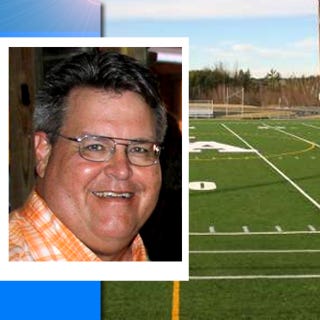
While out last week with a throat infection, I probably consumed a few more Nutty Buddy ice cream treats than my health care team would like for a diabetic.
Consuming tasty ice cream wasn’t the only way I spent my time.
Yes, I caught up on some sleep. I also watched the movie, “Woodlawn," which was released last October. Although I heard great things about the movie, I never had a chance to see it in the theater. So I took a chance and bought the movie on Blu-ray, and I wasn’t disappointed.
Much like the movie, “Remember the Titans,” which came out in September of 2000, Woodlawn focuses on the story of a high school football team in the Deep South integrating in the 1970s.
Woodlawn, which takes place during the 1973 and '74 football seasons, revolves around real events at Woodlawn High School in Birmingham, Ala. The movie is as much about faith as it is football. The movie's central character is Tony Nathan.
Nathan, as many of you 40 and older remember, went on to star at the University of Alabama under the great Hall of Fame coach Bear Bryant. Nathan later played for the Miami Dolphins under Hall of Fame coach Don Shula. He was one of the early star African-American running backs at Alabama and in the Southeastern Conference.
Woodlawn tells a story about what happens when something bigger than football or ourselves take over. It’s about the coming together as brothers in Christ on and off the field. It shows the power of changed lives that, after more than 40 years, still shine in the community.
I am a member of the Woodlawn generation. I would have gone to school and played football with Tony Nathan if I had attended Woodlawn.
Our generation is 40 years removed from high school, but for the African-American youths of our day, they might never be fully removed from the events that shaped their lives.
One thing that fascinates me about North Okaloosa County, especially the Baker community, is what I perceive and am told, is a lack of racism.
Anthony Bruner, George McTear, David Swinton and other black student athletes from the 1970s have told me they never felt the prejudice that gripped much of the nation and was most visible in the rural South.
I’m sure Baker athletes faced racism from outside the community. And I know racial tension existed in schools in Pensacola and Escambia County.
There were even racially motivated murders at Escambia High School in the mid 1970s as the school changed mascots from Rebels to Raiders, before finally settling on the Gators, which the school has now gone by for more than 30 years.
We recently celebrated Martin Luther King Jr. Day, and Black History Month starts Feb. 1.
Perhaps now is a good time for all of us, black and white, to step back and reflect on where we have been, how far we have come and how much more there is to do to ease the racial unrest that still shakes our nation.
People of different racial backgrounds can unite. And when we do, not only are our cities, states and nation a better place, but we also become better people in the process.
This article originally appeared on Crestview News Bulletin: DICKSON: We can unite
